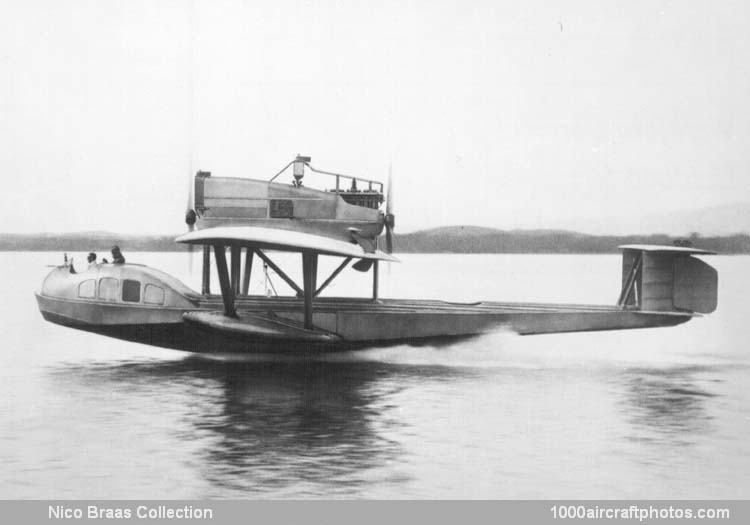The hull divided into several bulkheads was equipped with the novel sponsons. As a stopgap measure resulting from the conversion, the flight deck and the cabin for six passengers were housed in the structure on the front of the hull. The flight engineer and the four fuel tanks were located in the hull. The power plant consisted of two 270 hp Maybach Mb IV a engines arranged in tandem and housed in a fully enclosed nacelle connected to the center section of the wing and resting on the hull through the engine stand. The radiator for the front engine was of the lace-type while that of the rear engine was a box-type lace radiator located above the power plant. The wing and the sponsons were connected by means of profiled struts secured with diagonal cables. The Gs I had a box-type tail assembly.
The aircraft was first flown from the Bodensee (Lake Constance) on July 31, 1919. The Swiss airline AD ASTRA tested the aircraft for some two months, hence the Gs I became one of the first aircraft on the Swiss registry and it was allotted the registration CH-8 between October and December 10, 1919. In 1920, the Netherlands and Sweden showed an interest in the aircraft, so for demonstrations the Gs I was flown in five hours from Friedrichshafen to the Netherlands via Potsdam (near Berlin) and Norderney (island off the North Sea coast of Germany). However, in order to prevent handing over of the flying boat to the Allies, the Gs I was sunk by the crew in the Baltic Sea on April 25, 1920."
